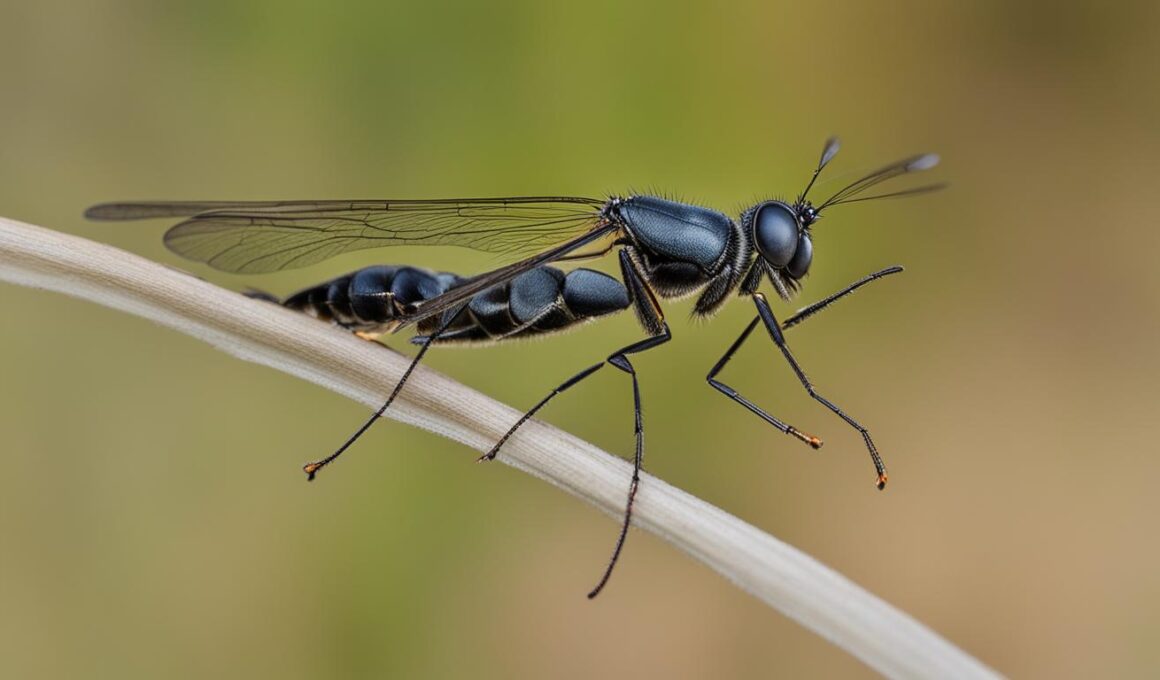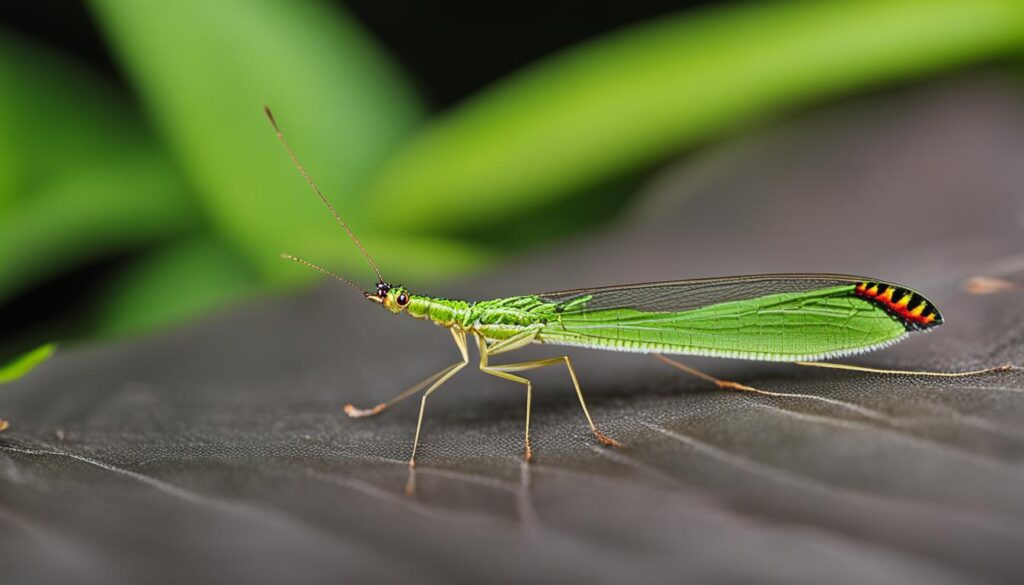If you’ve noticed winged insects around your home, it’s important to determine if they are flying termites or another type of bug. Flying termites, also known as swarmers, are the reproductive stage of a termite colony. These winged pests leave their nests to mate and establish new colonies. Identifying them correctly is crucial, as their presence can indicate a termite infestation that may cause significant damage to your property.
There are several bugs that are often mistaken for flying termites, making bug identification challenging for homeowners. In this article, we will explore some of the most common look-alike insects and discuss the distinguishing characteristics that can help you differentiate them from flying termites.
Key Takeaways:
- Identifying flying termites is essential for termite control and preventing structural damage.
- Flying ants are frequently mistaken for flying termites but have distinct differences in body shape and antennae.
- Green lacewings can resemble flying termites, but their distinct cylindrical shape sets them apart.
- Carpenter ants share similarities with flying termites but have different body segments and behavior.
- If you suspect a termite infestation, it’s crucial to contact a professional termite control service for accurate identification and appropriate treatment.
Now, let’s delve into the specific characteristics of insects often mistaken for flying termites, so you can identify these pests more accurately and take the necessary steps to protect your home.
Flying Ants: The Most Common Look-Alike to Flying Termites
Flying ants are frequently mistaken for flying termites due to their similar appearance and swarming behavior. However, there are distinct differences between the two.
Flying ants have three distinct body segments, a narrow waist, and bent antennae, while flying termites have a rectangular body shape, no distinct waist, and straight antennae. Additionally, flying ants have longer front wings compared to their back wings, while flying termites have four long wings of equal size.
It’s important to note that flying ants do not cause damage to wood but feed on food debris instead.
Green Lacewings: Easily Confused with Flying Termites
Green lacewings are slender insects that can be mistaken for flying termites, especially when they turn brown during certain times of the year. However, there are noticeable differences between the two.
Green lacewings have a more cylindrical shape compared to the rectangular shape of flying termites. They also have longer, thin antennae and wings that are not as long as those of flying termites.
Green lacewings primarily live in grassy areas with plenty of vegetation, where they feed on plant nectar and honeydew.
Carpenter Ants: Another Common Look-alike to Flying Termites
Carpenter ants are often mistaken for flying termites due to their similar appearance and ability to damage wood. However, there are distinct differences between the two.
Carpenter ants have three body segments, a tapered waist, and elbowed antennae. They also have wings that are shorter than their body.
In contrast, flying termites have a rectangular body shape, no distinct waist, and straight antennae.
While carpenter ants infest moist and decaying wood, they primarily feed on arthropods and honeydew, not wood.
Identifying the key differences between carpenter ants and termites can help you determine the nature of your bug problem and take appropriate action.
Conclusion
Identifying flying termites can be challenging, especially considering the presence of other bugs that resemble them. However, understanding the distinctive characteristics of flying termites and the differences between other insects can help you accurately identify whether you are dealing with a termite infestation or another type of insect problem.
If you suspect a termite infestation in your home, it is crucial to take immediate action. Contacting a professional termite control service is highly recommended. They have the expertise and knowledge to properly assess the situation and implement appropriate treatment measures to eliminate the infestation effectively.
By following this bug identification guide and being aware of the termite infestation signs, you can protect your home from potential structural damage caused by these destructive pests. Remember, early detection and prompt action are key to minimize the impact of termite infestations on your property.
Are Bugs That Look Like Flying Termites Actually Ground Hornets?
Yes, bugs that look like flying termites are often ground hornets. To get rid of them safely, consider using natural insecticides like neem oil or purchasing commercial traps designed for ground hornets. Another option is to consult a professional pest control service for more tips for getting rid of ground hornets safely.
FAQ
What are some bugs that look like flying termites?
Some bugs that resemble flying termites include flying ants, green lacewings, and carpenter ants.
What are the differences between flying ants and flying termites?
Flying ants have three distinct body segments, a narrow waist, and bent antennae, while flying termites have a rectangular body shape, no distinct waist, and straight antennae. Flying ants also have longer front wings compared to their back wings, while flying termites have four long wings of equal size. It’s important to note that flying ants do not cause damage to wood.
How can I distinguish green lacewings from flying termites?
Green lacewings have a more cylindrical shape compared to the rectangular shape of flying termites. They also have longer, thin antennae and wings that are not as long as those of flying termites. Green lacewings primarily live in grassy areas with plenty of vegetation and feed on plant nectar and honeydew.
What are the differences between carpenter ants and flying termites?
Carpenter ants have three body segments, a tapered waist, and elbowed antennae. They also have wings that are shorter than their body. In contrast, flying termites have a rectangular body shape, no distinct waist, and straight antennae. While carpenter ants infest moist and decaying wood, they primarily feed on arthropods and honeydew, not wood.
How can I accurately identify if I have a termite infestation or another type of insect problem?
By understanding the distinctive characteristics of flying termites and the differences between other insects, you can accurately identify if you have a termite infestation or another type of insect problem. If you suspect a termite infestation in your home, it is recommended to contact a professional termite control service to properly assess the situation and implement appropriate treatment measures.










